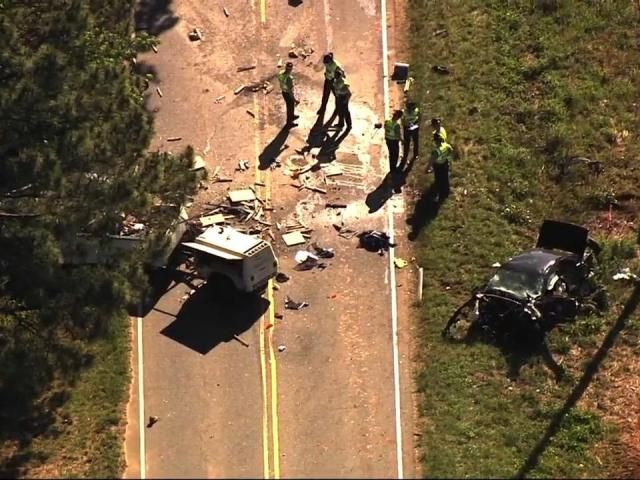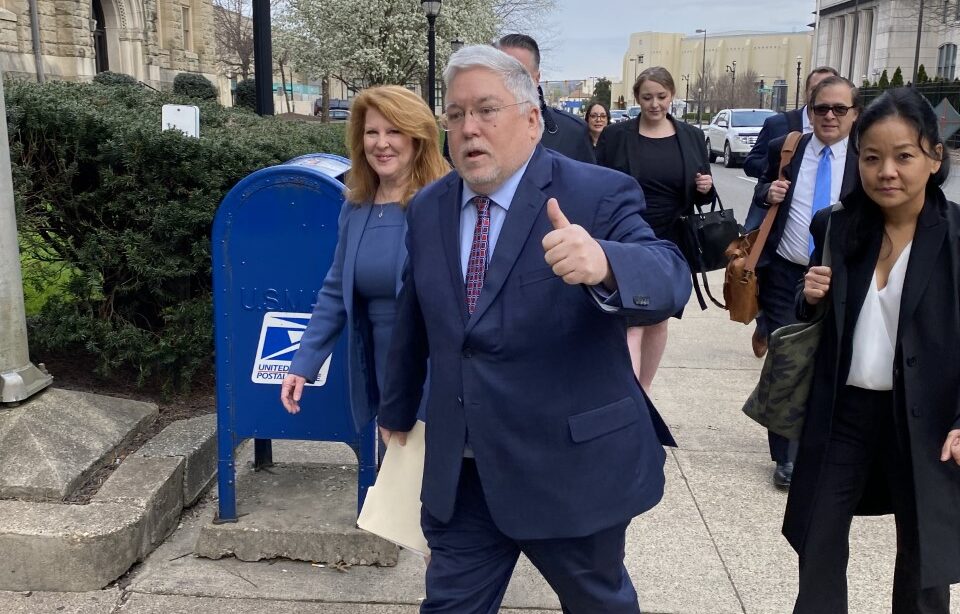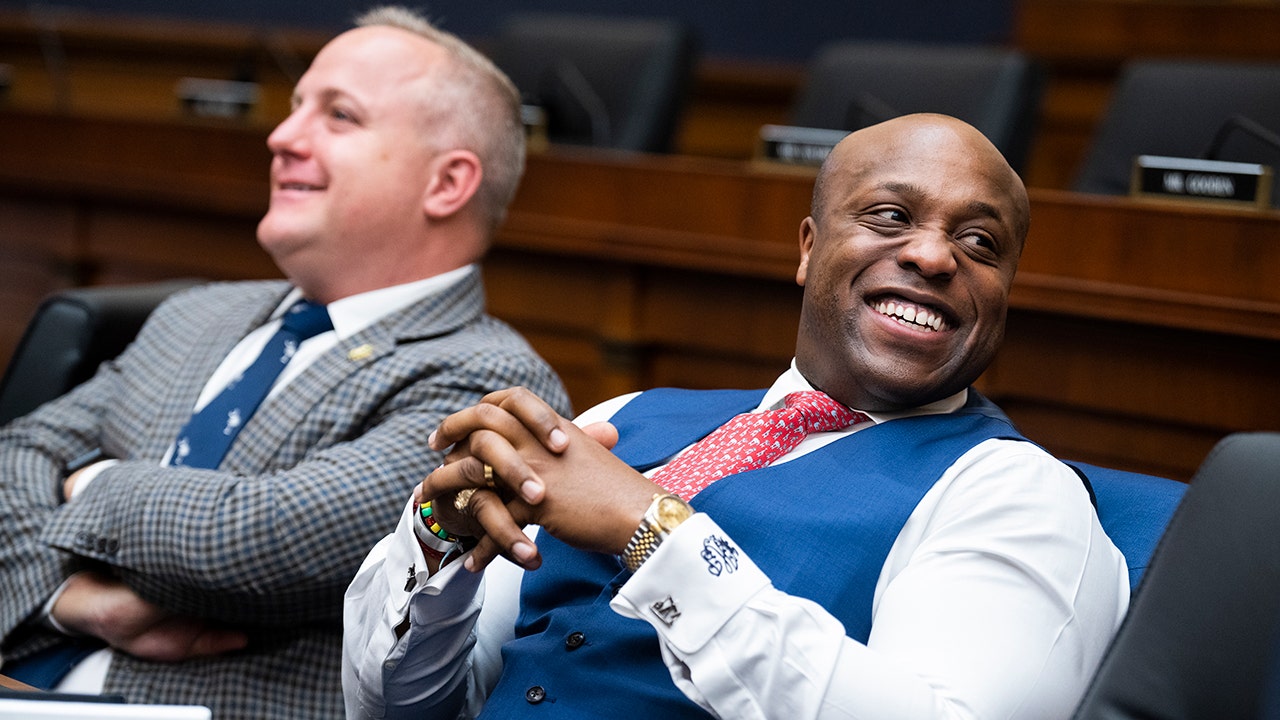Texas
Learning Before Legislating in Texas’ AI Advisory Council

From controlling home environments with commands like “Siri, turn on the living room lights” to managing fraud and risk in financial institutions, artificial intelligence is integral to many products and services we use daily.
And the news cycle reminds us frequently that this is just the beginning — that the full promise and peril of AI still lies before us. This is not just technology that will allow us to do the same things in a new way; it has the potential to make us “extra” human — smarter, faster versions of ourselves.
“Every aspect of civilization will be impacted, I believe, by AI, and therefore I wanted to study it thoughtfully and thoroughly before jumping into legislation,” said Senator Tan Parker.
The Artificial Intelligence Advisory Council was established through House Bill 2060 during the 88th legislative session. Composed of founding members and Co-Chairs Senator Parker and Representative Gio Capriglione, along with five other public members, the council intends to increase the study, use, and public awareness of AI. At the heart of any successful endeavor lies collaboration. The Texas AI Council will serve as a nucleus for fostering collaboration among key stakeholders, including government agencies, industry leaders, academic institutions, and research centers.
“There are very real and concerning downsides that have to be managed when it comes to AI and as a result of that, while I am always a free-market, free-enterprise guy trying to minimize regulation, some regulation will be necessary,” said Senator Parker.
That’s why he and the AI advisory council are taking a thoughtful approach. Through public hearings and agency testimony, they will create recommendations for legislation, which they plan to issue by December 2024.
“Communication and knowledge are the cornerstones of progress, and our council will serve as the catalyst, uniting minds from all sectors to produce thoughtful policy concerning AI advancement and technology,” according to Senator Parker.
The group’s first working meeting was at the end of March, when it heard from four state agencies, including the Texas Department of Information Research (DIR) and Texas Department of Transportation (TxDOT).
“I was quite pleased, actually, with the progress and the thoughtfulness of the agencies in terms of how they’re approaching AI,” Senator Parker noted.
For example, TxDOT is using AI to cut down accident response time, process payments, manage traffic, and evaluate aging infrastructure.
The Texas Workforce Commission also testified about their chatbot named Larry being used to screen calls and efficiently connect them with the best department. Parker doesn’t envision this ever becoming an all-bot operation, saying the people of Texas are best served by man and machine working together.
“We must maintain a human touch and a human presence with regard to the workforce commission, as you have people that are struggling for work and trying to find new careers and so forth,” Senator Parker said.
The council will continue hearing from agencies and the public through the summer—information that will help inform the group’s recommendations. Parker is confident in this approach. He strongly believes in the states, particularly Texas, leading the nation on critical issues.
He pointed to Jenna’s Law. Passed in 2009 and amended in 2017, the legislation mandates K through 12 training for educators. After being passed, a study found educators reported suspected abuse almost four times more than before the training. Now, Senator Cornyn is moving that law through the U.S. Congress. Parker hopes to see it become a federal law by year’s end and believes the Lone Star State can again lead the nation on AI legislation.
Texas has long been a beacon of innovation and growth in many areas, and AI creates an unprecedented opportunity to further bolster the state’s reputation as a leader in groundbreaking research and development while increasing the benefits to Texans in their everyday lives. The council aims to support cutting-edge research initiatives and breakthroughs in AI while propelling Texas to the forefront of global innovation and efficiency.
The next AI Advisory Council meeting will be held at the Texas Capitol on May 8th. For more information, including background on council members, overall objectives, and when and where you can participate in public testimony, check out the website.
Voices contributor Nicole Ward is a data journalist for the Dallas Regional Chamber.
Get on the list.
Dallas Innovates, every day.
Sign up to keep your eye on what’s new and next in Dallas-Fort Worth, every day.

Texas
Drought shuttered Texas' last sugar mill. Now, farmers are asking which crop is next?

England Cattle Company in Mercedes, Texas is facing a challenging situation. A 40-acre field that was once flourishing with sugar cane plants, cotton and corn is now dry and desperate for water. Farmer and owner of England Cattle Company, Michael England, joins FOX Weather.
MERCEDES, Texas – The last sugar mill in Texas shut its doors last month, citing a lack of water. Farmers were left to plow under the crop and wonder what drought would claim next.
That forced farmer and cattleman Michael England to destroy his 500 acres of sugarcane. The fertile fields remain empty, though, due to the lack of water. He only planted a fraction of other crops like cotton, sorghum (cereal grain) and corn on his remaining 2,500 acres.
“As all irrigated farmers, what we really need – the water – is in our dams… we just had no inflows,” said England, owner of England Farms and England Cattle Company. “We’ve only got just a few of our acres planted this year, and it’s just a big gamble that we’ve taken of even planting those.”
The 500 acres where England ripped out sugarcane remain barren because he has no water to plant new crops with.
(England Farms and Cattle / FOX Weather)
Drought causing crop failure
His row crops are 100% flood-irrigated. The water comes from the Rio Grande, about 10 miles from the farm. But with no upstream rain, the Rio Grande Basin dropped to record low levels recently, according to the National Weather Service and local media.
“Our water has been cut back over the last three years, but this is the worst I’ve ever seen where we’ve basically had zero water to work with,” England said.
“Our weather patterns have been changing over a number of years; (drought) in 2002, 2008, again in 2011, which, by the way, 2011 trumped the 1955 drought as far as statistics are concerned,” he added. “But then here we are back in a severe drought again. You’re (year) number three into it.”
EXTREME HEAT THREATENS CROP PRODUCTION IN TEXAS

The corn crop “is in really bad shape” according to England.
(England Farms and Cattle / FOX Weather)
Texas Gov. Greg Abbott has extended a disaster proclamation for much of south Texas, “certifying that exceptional drought conditions posed a threat of imminent disaster in several counties.” It was issued in July 2022 at the start of the most recent drought.
Lack of water from Water Treaty with Mexico
Another source of water is Mexico through a 1944 water treaty.
“Our main water source is the Rio Grande River, which is also an international boundary with Mexico,” England said. “It’s water that is shared by Mexico via the 1944 treaty that was there. And that water is pumped out of the river that goes to various water districts, spread out across the valley. And then we receive it through pipelines and canals. But as of right now, all of that water has been taken away from us and only for municipal use.”
Complete lack of irrigation water for crop production in the Lower Rio Grande Valley would cost $495.8 million in direct revenue loss, Texas A&M University has calculated.
TEXAS DROUGHT, DRY HEAT LOWERING COTTON QUALITY
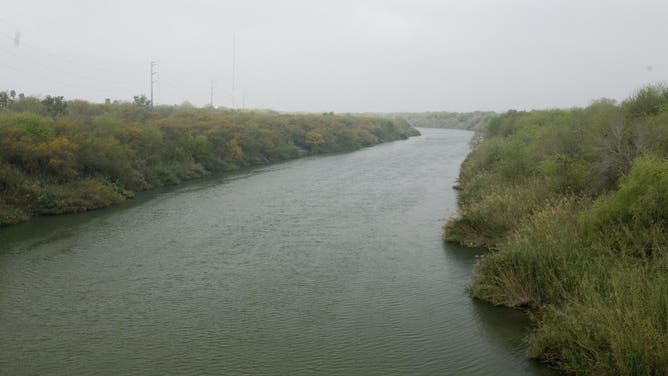
File: The Rio Grande River dividing Reynosa, Mexico (L) with Hidalgo, Texas in the United States (R).
(Robert Daemmrich Photography Inc/Corbis / Getty Images)
In exchange for U.S. water deliveries from the Colorado River, Mexico agreed to deliver water to Texas from several tributaries feeding the Rio Grande, according to the treaty. Every five years, Mexico must release 1.1 million acre-feet of water, which averages out to 350,000 acre-feet a year.
The Texas Farm Bureau pointed out that the country is behind over 736,000 acre-feet of water since the new cycle started in October 2020. That would mean delivering the equivalent of three-and-a-half years of water in the next year and a half.
The owners of the last sugar mill in Texas, along with other farmers, blame politics.
“Agriculture in the Rio Grande Valley depends on adequate and reliable irrigation water deliveries,” the mill said in a press release when it closed. “For over 30 years, farmers in South Texas have been battling with Mexico’s failure to comply with the provisions of the 1944 Water Treaty between the U.S. and Mexico that governs water sharing between the two nations on the Colorado River and the Lower Rio Grande.”
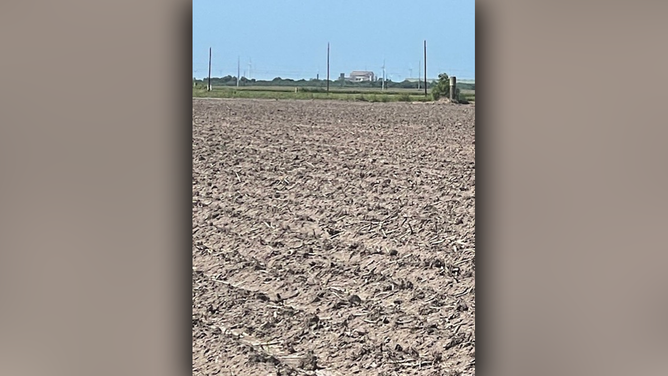
Dried out crops.
(England Farms and Cattle / FOX Weather)
Mexico cites its own water problems due to drought.
“Right now, we do have a delay in water deliveries, that’s the reality this current cycle, but our intention is to mitigate that deficit as much as possible,” Manuel Morales, secretary of the Mexican Section for the International Boundary and Water Commission Between Mexico and the United States told the Texas Tribune. “We want to continue complying with the treaty.”
Out of his 2,500 acres, England only planted 500 acres of cotton and 120 acres of sorghum grain. The cotton is “still holding on” but stunted because of the extreme drought. His grain crop is in “bad shape,” with shallow roots, “the crop is burning up,” he said.
HOW TO WATCH FOX WEATHER

The grain crop is in “bad shape,” according to England.
(England Farms and Cattle / FOX Weather)
“I just told myself, doesn’t make grain, I’ll make hay out of it for our cattle operation,” England said. “But, all the rest of the land is just sitting there idle.”
Texas is the top exporter of cotton in the country. In 2020, the state exported $1.7 billion. The Lone Star State exported $5.8 billion in agriculture in 2020, the sixth highest in the U.S., according to the state comptroller.
Texas
Texas A&M Expanding Initiative Aimed At Curbing Textbook Costs

Texas A&M University’s established course affordability efforts are credited with saving students an estimated $1.2 million this academic year by using Libraries-purchased materials as replacements for traditional textbooks.
Adobe Stock
Efforts aimed at saving Texas A&M University students money on the increasing cost of textbooks are set to expand.
The university’s established course affordability efforts are credited with saving students an estimated $1.2 million this academic year by using Libraries-purchased materials as replacements for traditional textbooks.
Texas A&M University Libraries recently hired Jennifer Pate to build on that success to create an even greater impact through OpenEd, a program launched at the start of 2023-2024 school year using funds from the Office of the Provost.
“I’m thrilled to join a library system and a university focused on student success,” said Pate, who has considerable experience with open educational materials, most recently spearheading efforts at the University of Northern Alabama. “The cost of textbooks and course materials has increased steadily at universities worldwide. OpenEd addresses the issue head-on by embracing and advocating for the use of open educational resources.”
Texas A&M University Libraries has hired Jennifer Pate to lead OpenEd, a program aimed at saving students money on the increasing cost of textbooks and course materials.
Texas A&M University Libraries

The course material affordability unit, housed in the Libraries:
- identifies low- to no-cost course materials;
- supports faculty who adopt, adapt and create open educational resources (OERs);
- increases awareness of program funding opportunities;
- and assesses the program’s impact on student success
As OpenEd grows under Pate’s leadership, savings are expected to increase exponentially, with new program-focused librarians and technical staff.
“OpenEd will help keep course materials affordable for current and future Aggies,” said Dr. Alan Sams, provost and executive vice president. “That is our objective, and that is a top priority for our libraries.”
Working alongside expert librarians, faculty, academic support professionals and campus partners, OpenEd is charged with expanding the OER movement on the Texas A&M campus and making Aggieland a national leader in the course affordability movement.
“Our existing, longstanding offerings for course reserves, open educational resources and open access materials have helped to make courses more affordable,” said Julie Mosbo Ballestro, university librarian and assistant provost. “OpenEd will consolidate those resources with enhanced, university-level focus and additional resources. I’m excited about the creation of positions dedicated to a program that will cut costs for students.”
Savings generated through OER efforts will vary depending on majors, but with more than 70% of Texas A&M students receiving some kind of financial aid, even modest cost reductions can help.
“With the ever-increasing costs of housing, transportation and food on top of tuition, it’s no secret that budgeting for four years of college is difficult,” said Ben Fisher ’24. “The university’s efforts to reduce our educational expenses mean a lot to us and can help ease the competing pressures between focusing on our studies or striving to make ends meet to pay bills.”
After three years, the Libraries hope to expand OpenEd for students throughout the Texas A&M University System.
“University Libraries continue to innovate and find new ways to serve students, faculty and staff,” Mosbo Ballestro said. “OpenEd is a game changer that will keep courses affordable for all Aggies. That’s something all of us care about deeply.”
Texas
Final thoughts from Texas Rangers’ fifth straight loss: A light at the end of the tunnel?

ARLINGTON – Buried deep beneath the rubble of their fifth straight loss, perhaps the heartbeat of the Rangers’ offense started to beat once again Tuesday.
Adolis García’s bat has been located.
García homered and doubled in the Rangers’ 7-4 loss to Cleveland. It was double his previous total for the first two weeks of May in which he had a lone double. He hadn’t homered since April 28. He was in a bad way with 11 strikeouts in 21 at-bats over the previous five games. As he is prone to do, García was in a stretch of chasing fastballs out of the zone. And the deeper the funk of the Rangers’ offense became, the more García tried to do, which only exacerbated the problem.
“He’s been trying too hard,” Rangers manager Bruce Bochy had said before the game. “And when things aren’t going well, he can get a little down on himself because he wants to help the team. He’s set the bar pretty high for who he is.”
Though García is so physically imposing, he is at his best when he doesn’t try to overpower fastballs, particularly those above the strike zone. When he falls into that habit, an extended slump can follow. He went through a stretch like this late last year. He does his most damage on secondary stuff. Both his homer and double came on sliders from Ben Lively and Scott Barlow. On the homer, it’s worth noting that Lively had tried to get García to chase with three straight fastballs either wide of or above the zone. García did not swing.
It’s also worth noting that with García’s homer in the second and Corey Seager’s in the third, it marked the first time this year the Rangers’ best homer-hitting duo both homered in the same game. If Seager and García get hot at the same time, the offense becomes exponentially better.
Alright, that said, here are some other VERY IMPORTANT observations from the Rangers’ loss Tuesday:
Best silver lining: Jack Leiter’s loss was a chance for others to gain, namely Jonathan Hernández and Yerry Rodriguez, both of whom were called on to pitch multiple innings. Both have struggled with command and to come out of the gate firing their best stuff. Bruce Bochy has all but begged for them to step up.
Granted, coming in with a big deficit is the definition of low leverage, but both were very effective. Rodriguez especially so. He entered the game throwing 97 mph, compared to 95 mph over the weekend in Denver. Bochy had mentioned the need for him to bring his max velocity with him rather than needing a hitter or two to ramp up.
Pitched four hitless innings, allowing only a hit batter who was then erased on a double play. Even made a nice reaction on a hard-hit comebacker off his glove that knocked his hat clean off his head.
“When you are aggressive and attack the zone, good things happen,” Bochy said. “We need these guys to step up. And they did.”
Worst prediction: The Rangers are going to need a relief arm to boost the bullpen on Wednesday. There is only one healthy reliever on the 40-man roster, lefty Antoine Kelly. Put those factors together and it’s easy to believe Kelly will be the callup. He might be, but here’s why he might not: Kelly, who returned from a three-week stint on the IL just 10 days ago, still hasn’t pitched two full innings and hasn’t pitched on consecutive days.
Think the Rangers either need somebody who can go two-plus innings or somebody who can pitch on consecutive days. Think it makes it just as likely that either veteran Shaun Anderson or Gerson Garabito, signed to a minor league contract this winter after pitching the last two seasons in Nicaragua and the Dominican Republic, would be added. It would force the Rangers to create a spot on the 40-man roster. Reliever Austin Pruitt (knee) would seemingly be easy enough to move to the 60-day IL since he’s not even around the team right.
So, if I’m making a prediction for who replaces Jack Leiter in the short-term on the 26-man roster, I’m as inclined to go with Anderson or Garabito as I am with Kelly.
Worst collision: The collision between Cleveland shortstop Brayan Rocchio and center fielder Ty Freeman was hard to watch. From the summit of the Globe, you could see the two converging on Adolis García’s pop to shallow center in the fifth and you kept thinking ‘’uh, nobody’s slowing down.”
Rocchio hit Freeman in the face with his extended glove and also in the elbow with his own face. Both crumpled to the ground. I was sure somebody had a broken jaw. Honestly, was also amazed that Freeman held on to the ball. And more amazed that after being visited by athletic trainers, both stayed in the game. It was scary and about as solid contact between two players as I’ve seen in some time.
Freeman took a beating Tuesday, getting hit twice by pitches and also making a diving catch in center field.
Worst stretch: Final score from Colorado this week: Stars 9, Rangers 6. Which tells you something about both teams, just how well the Stars played in Denver and just how poorly the Rangers did.
Worst sign of the apocalypse: When I got home from the ballpark, did another check of Ebay, just to see what people were seeking for Corey Seager World Series replica rings. Mind you: This is a replica. The stones are not real. The metal is not gold. It is a replica. It says so on the box. There were people on Ebay asking for $800 and $1,200 for their rings. Granted, they included “or best offer” in their ads. The going rate appeared to be about $125 a pop from what I saw. This was two hours after the game ended. What a racket.
Twitter: @Evan_P_Grant
Find more Rangers coverage from The Dallas Morning News here.
Click or tap here to sign up for our Rangers newsletter.
-

 Politics1 week ago
Politics1 week agoHouse Dems seeking re-election seemingly reverse course, call on Biden to 'bring order to the southern border'
-

 World1 week ago
World1 week agoStand-in Jose Raul Mulino wins Panama presidential race
-

 News1 week ago
News1 week agoCompass Direct LLC’s 2024 Registration in North Carolina
-

 World1 week ago
World1 week agoTech compliance reports, Newsletter
-

 News1 week ago
News1 week agoColumbia University cancels its main commencement ceremony after weeks of turmoil
-
News1 week ago
UCLA to resume in-person classes after Gaza protest crackdown
-

 News1 week ago
News1 week agoMan, 75, confesses to killing wife in hospital because he couldn’t afford her care, court documents say
-

 Politics1 week ago
Politics1 week agoPresidential polls show deadlocked race as party conventions quickly approach














